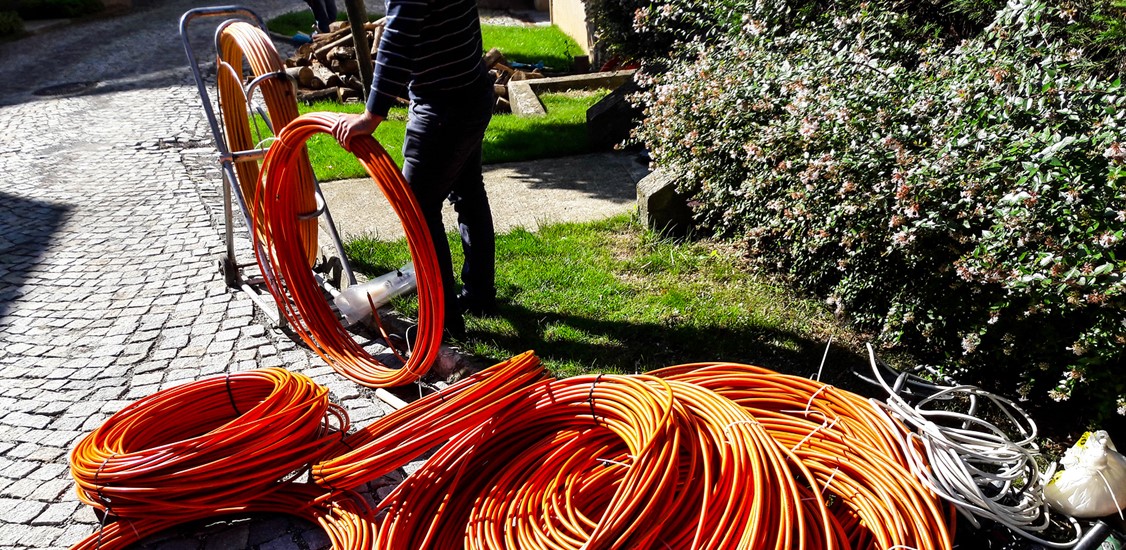To build the future of universal broadband, we need more people and everyone in the industry playing their role.
We have a $65 billion opportunity to deliver broadband across the country, but to build that future, we need more people. The Brookings Institution estimates that broadband infrastructure funds will require existing installer and repairer companies to fill 36,000 new positions, and new installer and repairer roles will require another 12,000. That’s 42,000 potential careers where people can make a living, care for their families and boost local economies.
But after network buildouts, what happens next? Who will have the skills to administer, maintain and monetize those networks, or innovate them into the future?
We need more than a simple, one-time solution for sustainable broadband training. We should consider an ongoing process and models that evolve alongside the technology as it innovates. The industry at large, but also niche broadband companies, can take action to solve these labor needs, but our solutions will need constant re-evaluation along the way.
The industry is already taking action
Experts have long recognized the need to train more workers. Now, with money in the states’ hands and ready to distribute, the industry is taking that need much more seriously. While large companies like AT&T can partner with fiber manufacturers like Corning to train more technicians to install their fiber, smaller companies may not have such an advantage.
This is why the Fiber Broadband Association (FBA) announced a partnership with the Wireless Infrastructure Association to create a Registered Apprenticeship and training curriculum offering industry-recognized credentials, certifications and career paths. Even smaller community broadband companies can employ the curriculum based on their labor needs. The FBA piloted the first optical telecom installation certification (OpTIC) program in Wilson, North Carolina’s first gigabit city, at Wilson Community College in partnership with Greenlight Community Broadband. It included 144 hours of class instruction and lab work and 2,000 apprenticing hours with Greenlight and other regional partners, and students were enthusiastic about the program. This partnership can allow Wilson to meet the region's deployment needs.
The need for specialization
While there is no doubt the broadband industry needs technicians with the knowledge to build out and maintain networks in many hard-to-reach places across the country, it also requires specialized training. After understanding the splicing, clearing, and connecting, those technicians will need more advanced training to get into more niche broadband fields. As major network providers like AT&T continue to shift most of their services to software-driven cloud networks, we will need workers with software skills to unite and enable those systems.
Even at Clearfield, after 15 years, we still innovate on our essential service. We continue doing things a little better daily through thoughtful product craftsmanship and understanding our customers’ challenges. Within the same year, we have already innovated our Fast Pass technology — enabling service providers to pass twice as many homes — into the Fast Pass Connect, which not only passes double the homes but also connects them in nearly half the time. Continuous improvement and innovation are a part of this industry, and it is incumbent upon those who are a part of it to create the workforce needed to keep that up.
Who can make it happen?
The industry has made great strides in building solid pathways into broadband careers, and at Clearfield, we saw this as our call to action to meet our specialized labor needs. We supply passive fiber technology so our customers can install and manage their networks better, but there are thousands of ways to improve how we do that with greater ease, in less time or at a lower cost. To build the workforce we need to keep innovating and improving, we started Clearfield College: A self-paced learning program including self-study, live instructor-led virtual training and hands-on practice.
Sure, offering this specialized training comes at a cost to us. Still, we can train broadband workers while the industry is trying to build the foundational knowledge they need to learn more. Ideally, our students develop into long-term members of our team, and even if they go on to use that foundation of specialized skills elsewhere, they may be the next person to revolutionize the industry.
To keep up with the demand for skilled broadband workers, both the industry at large and niche companies can follow a three pronged-approach:
- Step one - Recruit: Go out and recruit skilled tradespeople and encourage them to consider a career in broadband. We’ve worked with service providers that struggled to maintain the labor team needed to create their networks. They found the most success in searching and recruiting technicians among people who work with their hands — landscapers, mechanics, carpenters — and got them to consider a different (but promising) career by providing them with a pathway.
- Step two - Build expertise: Recruitment is much easier when companies invest in developing their own specialized training programs. Specialized companies can partner with local community colleges to run training programs, like Greenlight in Wilson, or find larger companies providing basic training needs. Both companies can promote one another’s training programs.
- Step three - Continuous evaluation: Once we install the means for more people across the country to communicate at increasingly faster speeds, innovation will require new specialized workers to keep and maintain the systems that make that possible. We will need to continuously re-evaluate our efforts to maintain that talent pool alongside industry growth.
From federal to state and local governments as well as individual citizens who need to compete in today’s digital world, everyone recognizes the need for broadband. Now comes the hard work it will take to get there. The urgency for a broad spectrum of broadband workers who can power future networks and innovation is now. The money is there, and buildouts are happening. The efforts of the broadband industry, local officials, and community broadband service and support providers are building a foundation for the future.






















